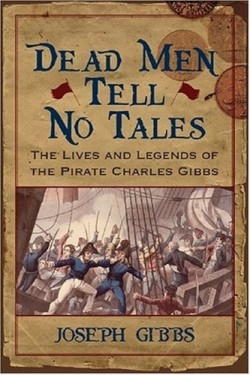Dead Men Tell No Tales
The Lives and Legends of the Pirate Charles Gibbs
While Charles Gibbs waited in the “living grave” of a death-row jail cell in a New York prison in 1831, he made a shocking confession. Consigned to the gallows for his role in a botched mutiny/piracy attempt off the Atlantic coast, the convict told a police magistrate that his real name was James Jeffers and that he’d once led a gang of Caribbean pirates who captured and looted up to forty ships and murdered hundreds of passengers and crew. His recollections were laden with inconsistencies and contradictions. His claims, for example, that he was a veteran of the War of 1812 and once operated a Boston grocery store would later be largely dismissed. But Gibbs provided many concise details about his activities between 1817—when he participated in a mutiny aboard the schooner Maria—and the day of his arrest for crimes aboard the brig Vineyard in 1830. He revealed the names of captured ships, locations, dates, cargo items, and the fates of victims who were often butchered with cutlasses or set adrift without provisions.
The confessions of Charles Gibbs, according to his biographer Joseph Gibbs, “appear to provide a firsthand account of Caribbean piracy’s last, inglorious epoch.” Joseph Gibbs has been a reporter and editor with several newspapers in Massachusetts, and he has written two previous histories, Gorbachev’s Glasnost and Three Years in the Bloody Eleventh. Here he scrutinizes the claims of not only his subject, but much of the lore that has accumulated in the almost two centuries since his death, producing a book that will be appreciated by general readers as well as scholars. As he reconstructs Gibbs’ origins and career in piracy, he also includes the necessary context—the wartime privateering that spawned piracy, the conditions aboard seagoing vessels, and profiles of the characters whose stories intersect with that of his subject.
Gibbs claimed to have been appointed captain of the pirated New York-based brig Laura Ann in 1817, at the age of eighteen or nineteen, because of his “coolness and intrepidity.” “Desensitized to cruelty” and fueled by “grog,” a mixture of rum and water, Gibbs and his mates spared no lives in order to eliminate witnesses. His first victims, the crew of the English ship Indispensable, “were immediately destroyed; those who resisted were hewn to pieces; those who offered no resistance were reserved to be shot and thrown overboard.” In another incident in 1821, the USS Enterprise forced Jeffers’ ship aground. The pirate left a pot of poisoned coffee on his galley stove for his pursuers before swimming to shore with his crew. Only a “bloodthirsty prose” can elicit the exploits—whether fact or legend—of the pirate Charles Gibbs.
Reviewed by
Joe Taylor
Disclosure: This article is not an endorsement, but a review. The publisher of this book provided free copies of the book to have their book reviewed by a professional reviewer. No fee was paid by the publisher for this review. Foreword Reviews only recommends books that we love. Foreword Magazine, Inc. is disclosing this in accordance with the Federal Trade Commission’s 16 CFR, Part 255.

